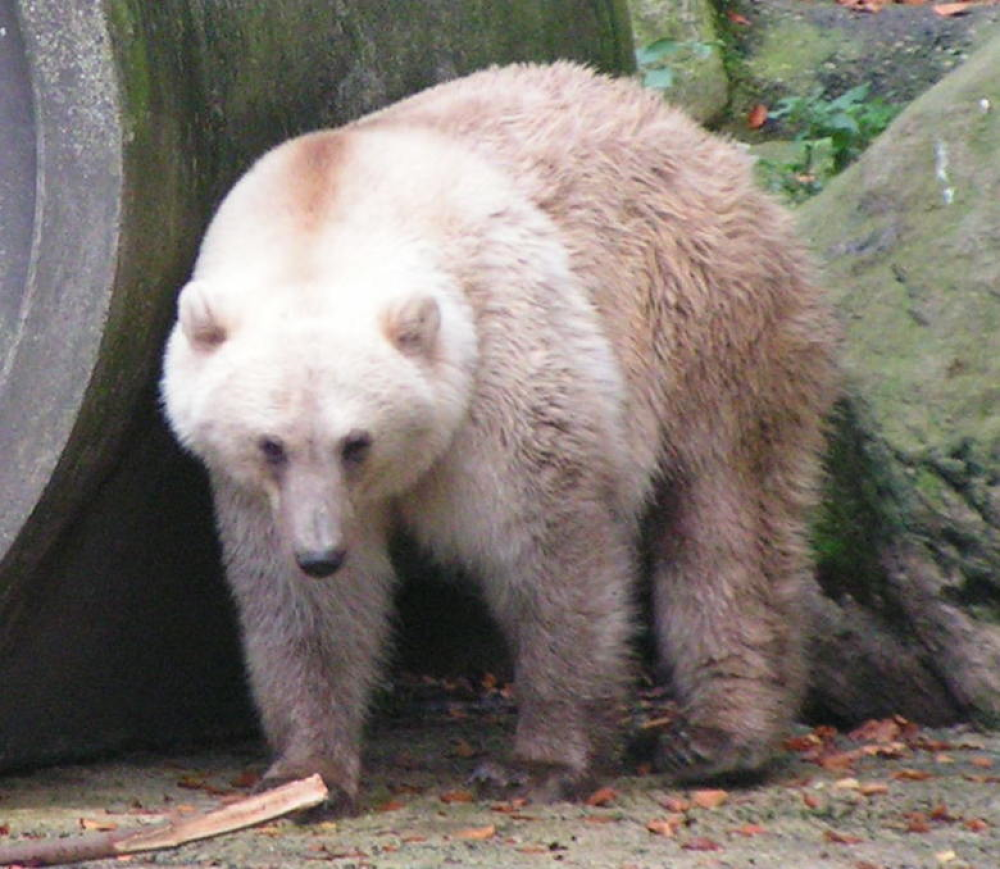Grizzly bears in the Arctic are becoming an increasingly common occurrence as the planet warms, which means that they are beginning to encroach on polar bear territory more regularly. As a result, scientists have found evidence of polar-grizzly hybrids, but new research has confirmed that these “grolar bears” remain extremely rare.
Polar bear and grizzly bear hybrids come in two forms: grolar bears and pizzlies, and the difference comes down to the offspring’s parentage. A grolar bear is the offspring of a grizzly bear male and polar bear female, while a pizzly bear is the offspring of a polar bear male and grizzly female.
Male grizzly bears are more aggressive than polar bears, and may win out in situations where males of both species are competing.
Dr Ruth Rivkin
All wild hybrids between polar bears and grizzlies – that is, all the hybrids we know of that exist outside of zoo care – are grolar bears, defined by having a grizzly father and a mother who is either a polar bear or a hybrid. As for why that is, it largely comes down to logistics.
“Although polar bear and grizzly bear ranges do overlap, the overlap typically happens in the summer when polar bears are on the mainland coast waiting for the sea ice to form up again,” said postdoctoral research fellow with Polar Bears International, University of Manitoba, and the San Diego Zoo Wildlife Alliance, Dr Ruth Rivkin to IFLScience. “Mating season for polar bears occurs in the winter while the bears are out on the sea ice hunting seals.”

“It’s becoming more common to see grizzly males also going out on the sea ice to hunt on the smaller islands in the Canadian Arctic Archipelago. If they run into a polar bear female while they’re on the sea ice, they will (rarely) mate with her,” Rivkin continued.
“What we don’t see is grizzly females going out that far, which means that male polar bears don’t have the opportunity to mate with female grizzlies. Also, male grizzly bears are more aggressive than polar bears, and may win out in situations where males of both species are competing for a female grizzly or polar bear.”
As more grizzlies encounter polar bears, it was anticipated that hybrids would become more common. As such, an international collaboration – supported by Environment and Climate Change Canada – decided to investigate the matter by developing a new monitoring tool to look for “hidden” hybrids between grizzly and polar bears.
It was the first-ever large-scale analysis of these hybrids in the wild, made possibly by an innovative SNP genetic sequencing chip that could analyze grizzly and polar bear samples. It analyzed 371 historic polar bear and 440 historic grizzly bear samples from across Canada, Alaska, and Greenland, finding only eight grolar bear hybrids.
“We did not discover new hybrids, which suggests that while hybridization does happen, it is so far restricted to a small portion of the western Arctic,” explained study co-author Rivkin. “Nonetheless, our work is a valuable addition to the conservation world because it allows for easy, and relatively inexpensive monitoring for hybrids on an ongoing basis.”
The study is published in Conservation Genetics Resources.
Source Link: Grolar Bear Hybrids Are “Extremely Rare”, With Just 8 Confirmed Individuals